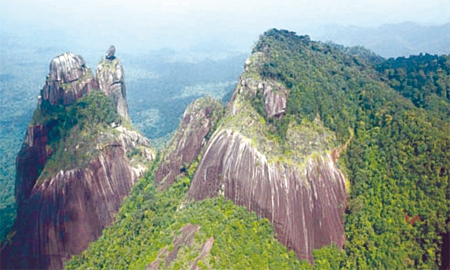
Suriname’s privileged geographical location can enable it to become the leading maritime hub of the region. How is the government working on achieving the country’s full potential in maritime transport?
Suriname’s location in the Caribbean gives it a clear competitive advantage. It is the maritime hub for the highly lucrative Caribbean and Latin American markets.
Part of the government’s policy is to dredge the country’s relevant waterways, build port terminals, and rehabilitate our existing port/terminal infrastructure. This includes the facilities on the borders of the country (e.g., Suriname-French Guiana, Suriname-Guyana, etc.). We finished with the rehabilitation of the Port of Paramaribo last year. Right now, we are busy with the rehabilitation of the New Nickerie port on the western border. We hope to finalize the rehabilitation program by the end of this year. All these projects are designed to bolster the development of the maritime sector.
In the future, we intend to develop a seaport and an inland terminal for river cruises. There are also plans to build port terminal facilities in Albina, on the eastern border facing French Guiana, to facilitate trade between Suriname, French Guiana and Guyana. In addition, ferries will be purchased to improve our ferry services.
Recent notable projects include the completion of the Port Paramaribo Rehabilitation project, as you’ve mentioned, and the Institutional Strengthening of the Transport Sector Project (ISTS). This year, which projects would you like to highlight?
Air transport holds a lot of potential. For instance, there is the Johan Adolf Pengel (JAP) International Airport Project in Zanderij. JAP seeks to become a regional hub for aviation. They intend to install more runways and facilities, and erect additional hotels. Suriname has a highly favorable geographic location, and these developments will put JAP in the best position to tap into that.
"Our goal is to liberalize the aviation sector. Falisie Pinas, |
As the chair of Caricom, President Bouterse announced that the main focus in Caricom should be on ensuring economical self-reliance and improving connectivity in both telecom and physical routes. This will not only merge the single market but also open up a lot of opportunities for export, import and transport of goods, products, services, and knowledge through people.
An important aspect of the country’s renovation process is the role of certification. How has the industry coped with the requirements and what new goals have you set for yourself?
We are part of international transport organizations. As such, we are obliged to implement the required global standards for day-to-day operations. Our transport policy is aligned with that. A key example of this would be Port Paramaribo, which was awarded for having the Best Multipurpose Terminal by the Caribbean Shipping Association (CMA). This recognition affirms the port’s security and dependability. It has good accessibility, high security, improved infrastructure, and the best container handling capacity.
The Maritime Authority of Suriname (MAS) is the first regulatory agency within the Dutch and English-speaking Caribbean to receive an ISO 9001:2008 certification. MAS has been regulating the sector to make sure that we all of our companies are certified.
Among the agreements we have ratified are the International Ship and Port Facility Security (ISPS) Code, the Convention on the Safety of Life at Sea (SOLAS), and the International Convention for the Prevention of Pollution From Ships (MARPOL).
The flag carrier’s new Miami-Georgetown route will link Paramaribo with the U.S. and Guyana. What does this development mean to Suriname?
This re-established link to Miami in the U.S. and Georgetown in Guyana, with a stopover in Paramaribo here, is important for us. Our goal is to liberalize the aviation sector. This would entail having linkages with as many countries as possible. This new connection to Miami is meant to increase accessibility to the U.S. and encourage more people from Florida to visit Suriname as a holiday destination, where they can experience nature at its best.
Moreover this is one of the agreements in the IIRSA (Initiative for the Integration of the Regional Infrastructure of South America) to improve interconnectivity within South America. Creating more hub opportunities for both people-to-people contact and the movement of goods are essential to Suriname’s growth.
What business opportunities would you like to highlight for the Floridian market?
In terms of transport, we see strong possibilities in the area of aviation. We can create linkages with Miami and offer direct flights. That is something that we have in the pipeline. Right now, we have the route going to and from Georgetown, Guyana. We intend to have direct flights available within Suriname in the future. If you look at Surinam Airways (SLM), you will see that there is a market in Georgetown, Miami and Toronto. There is a significant Guyanese diaspora in Toronto, just as there is a large Surinamese diaspora in Holland. When you talk about European tourism in the country, most of our visitors come from Holland. For the U.S., we are starting to tap into the Floridian market. Through that, we hope to increase the number of American tourists coming to Suriname.
Right now, we have an exchange program with Georgetown. Our tourists can venture into Georgetown to explore the sights and vice versa. This will allow us to mutually benefit from a larger catchment. That is the goal. In the future, we intend to connect to Guyana by land through a fixed connection or a bridge, because right now, we are doing it through ferry. Our vision is to connect Suriname to the U.S. through Guyana, Venezuela, Colombia, Panama, Costa Rica, Nicaragua, and Mexico. There is also a route to encourage tourism by tapping into the neighboring countries. We have big plans in the Caribbean and Latin America. At the moment, the connections are by air. We hope to further integrate with the region by land. This is where investors can play a role.
0 COMMENTS